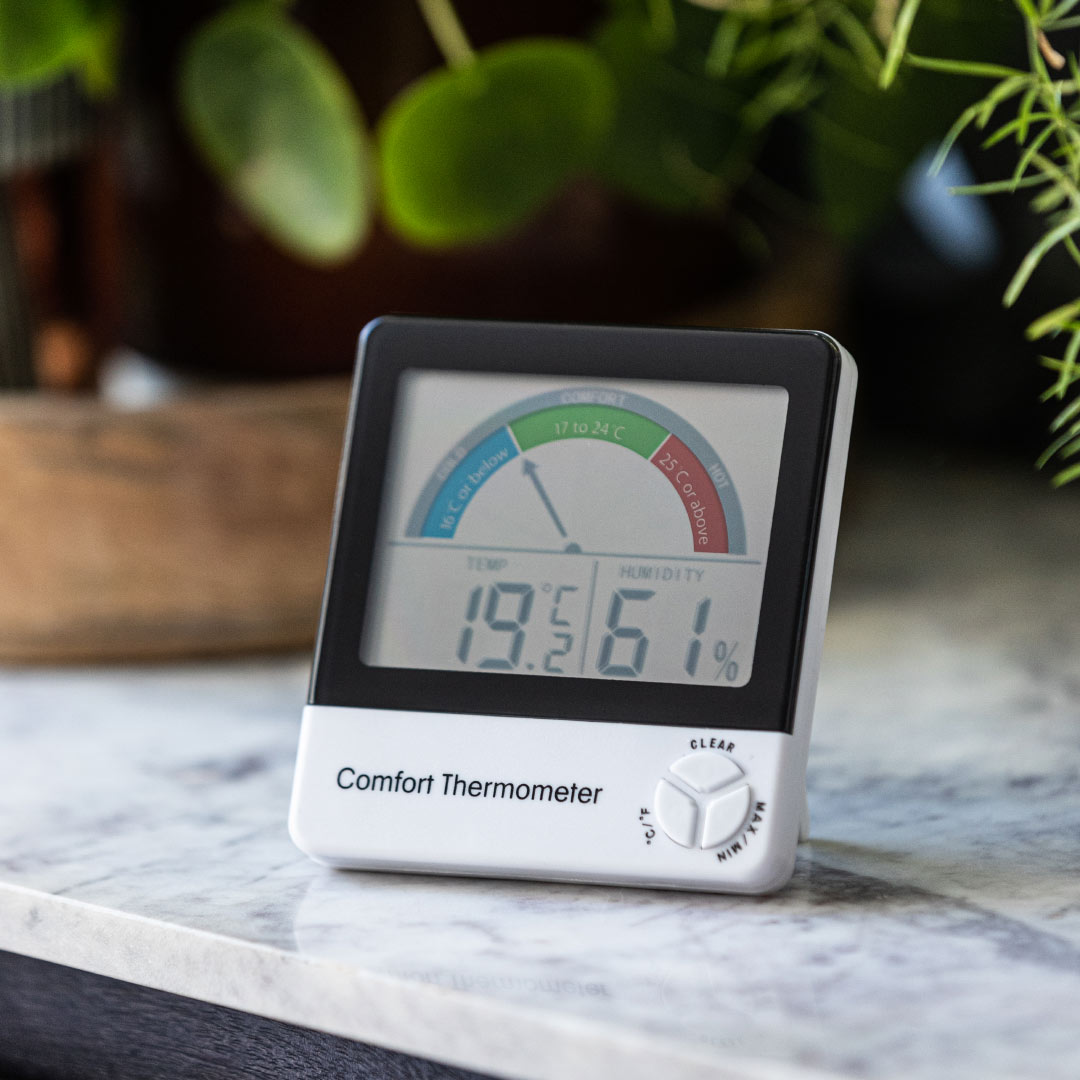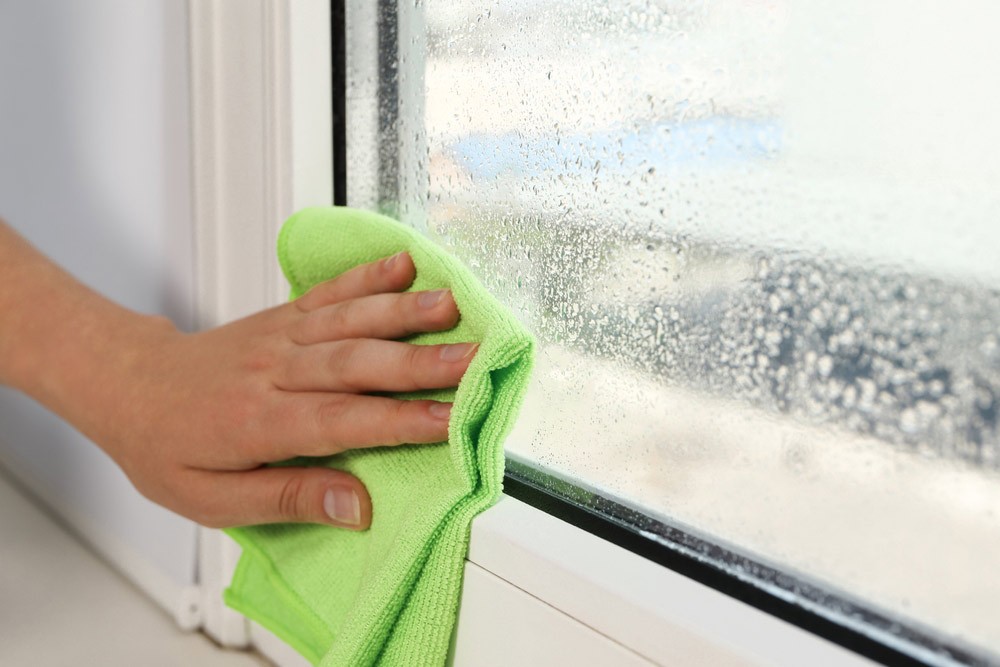How to Prevent Damp in Winter

Damp and mould is an issue for many households over winter. The most common cause is condensation damp, which is triggered by an increase in moisture and a decrease in ventilation.
In this blog, we’ll explain exactly why damp happens, why prevention is key, and explore some different methods for preventing damp.
Different types of damp
There are three different types of dampness in homes. Any of these may worsen in winter due to colder temperatures, but condensation damp is usually caused by cold conditions, and can often be improved by making small changes around your home.
- Penetrating damp: Typically caused by roof, gutter or pipe leaks.
- Rising damp: Caused by groundwater soaking up into the walls and floors, usually because there is no damp proofing or the proofing is not working correctly.
- Condensation damp: Excess moisture inside the home which settles on cold surfaces, often causing black mould to grow. Usually caused by inadequate insulation, heating or ventilation.
Why do homes get damp in winter?
During the winter, the air inside our homes tends to retain more moisture. This is for three main reasons:
- Increased moisture: Often in winter, we dry more washing inside, take more hot baths and showers and cook more hot meals. All of these activities produce moisture, which evaporates into the air around us. Even spending more time inside, simply breathing, will impact the humidity.
- Poor ventilation: Naturally, we keep our windows shut more often because it lets precious heat out, and unwelcome cold inside. However, this means damp air has no escape. Windows, vents and extractor fans all need to be used to maintain healthy ventilation.
- Low temperatures: Higher temperatures offset damp air, drying the conditions. But with costly energy bills, maintaining a warm room temperature isn’t possible for all households, and this increases the risk of dampness. A lack of insulation can also cause lower temperatures and increased moisture.

Why mould prevention is important
Living in damp conditions is harmful to human health as well as leading to property damage. It’s important to use preventative measures against dampness and take action quickly if there are signs of excess moisture in your home.
Impact of damp on health
Damp and mouldy homes increase the risk of respiratory problems, respiratory infections, allergies or asthma. They can also affect the immune system. It’s particularly important for babies, older people, and those with existing skin, respiratory or immune issues to avoid damp and mould.
Impact of damp on homes
When damp air is trapped inside a building, it settles on cold surfaces like windows and exterior walls, turning into water. This process is known as condensation. Frequently damp surfaces create an optimal environment for black mould to grow. In the short term, this can damage your possessions and surfaces. In the long term, it can cause wood to rot and lead to structural damage.
Optimum room temperature and humidity
The best way to avoid damp and mould is by keeping your room temperature and humidity at the optimum levels.
Try to maintain a consistent room temperature of around 20 °C, and avoid letting it drop below 16 °C. The humidity should be between 30 and 60%, any higher and there is too much moisture in the air.
Monitoring your room temperature and humidity using a thermometer/hygrometer, like the Comfort Thermometer, will help to ensure your conditions are both comfortable and not conducive to damp. The colour-coded dial makes it quick and easy to see if your room is at the optimal temperature and humidity levels.
Using a thermometer and hygrometer will also help when trying out different preventative methods, as you can monitor the difference and find out what works best for your home and lifestyle.

How to prevent damp in winter
The good news is that there are quite a lot of different options for preventing mould and condensation damp in your home over winter.
1. Open windows
Damp air gathers and turns to mould when it isn’t able to circulate and escape. Open windows wherever possible to let out damp air, especially in the bathroom.
2. Use vents and extractor fans
Ensure vents are uncovered, and use extractor fans to keep air flowing.
3. Have the heating on low
Having the heating on low for longer periods will keep the temperature consistent and prevent condensation.
4. Avoid drying clothes inside
One load of wet washing contains almost two litres of water which is released into the air if dried inside. Tumble dry as much as you can, and hang your clothes outside on drier, sunnier days. Avoid putting clothes on radiators; it will cause condensation to occur and prevent heat from circulating.
5. Use a dehumidifier
Dehumidifiers draw humidity from the air, and are an effective method of reducing moisture, particularly in windowless rooms. For smaller problem areas like wardrobes and cupboards, moisture traps are great budget options for preventing mould.
6. Wipe down condensation
Use a microfibre cloth to remove condensation from windows, walls and mirrors. Don’t place the cloth on a radiator afterwards.
7. Place lids on pans
Cover pans with lids when cooking. Not only will it prevent moisture from being released into the air, but the food will also cook faster and therefore use less energy.
If these tips aren’t working
If you’ve tried all of the tips above and you’re still finding mould inside your home, the cause could be structural. Inadequate insulation could be leading to cold spots, which increase the risk of condensation in certain areas. If the damp is rising from the ground, you’ll likely need to have your damp proofing investigated.

Summary
Dampness in the home is usually caused by penetration, rising or condensation damp. Condensation damp is the most common cause of moisture in the home throughout winter. It’s caused by an increase in moisture production, poor ventilation and/or insulation, and a drop in temperature.
Damp and mould are harmful to human health, increasing the risk of respiratory issues and problems with the immune system. In addition, they can cause damage to possessions and properties. Therefore, mould prevention is essential, particularly for babies, older people and those with existing health issues.
The best ways to prevent mould are to increase ventilation by opening windows and using extractor fans, decrease moisture by avoiding drying clothes inside, and have the heating on low to prevent condensation.
Using a room thermometer and hygrometer will help to keep your conditions at a level that is safe and comfortable. You can also use it to track how effective your preventative methods are, so you know what works for your home and lifestyle.
You might also like:
Top 5 Room Thermometers for Saving Energy